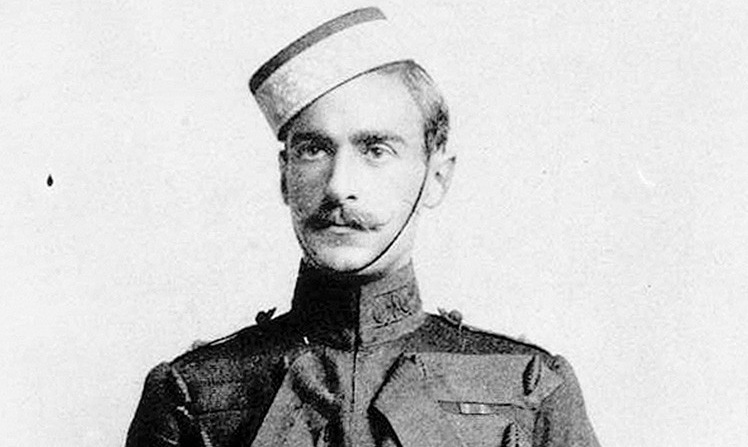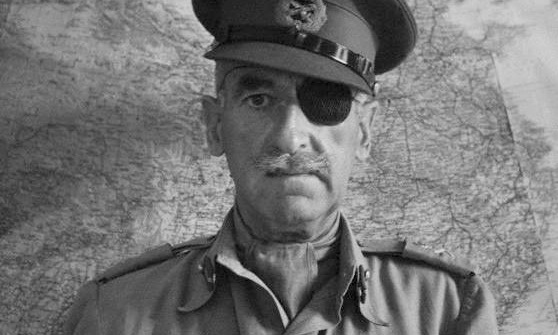'The immortal soldier' during the two World Wars
British soldier Adrian Carton de Wiart participated in both World Wars, his critically wounded and immortalized.
Blindness and amputations are injuries that make soldiers lose their ability to fight completely. However, that could not quench the will of Adrian Carton de Wiart, the British army officer. He suffered a total of 11 serious head-to-toe wounds in nearly 60 years of combat, and survived a series of aircraft accidents and is considered the "immortal soldier" of England.
Adrian Paul Ghislain Carton de Wiart was born on 5/5/1880 in Brussels, the son of a noble Belgian family. His mother died when Wiart was only 6 years old. The father married his new wife and sent him to a boarding school in England.
On October 11, 1899, tensions between the Netherlands and England in South Africa broke out into the Second Boer War. Wiart had to use fake names, make false declarations to get old and quit school to join the British army. After injuring his stomach and groin, he was sent back to England.
"When the conflict broke out, I realized that the fighting was in my blood. If you didn't let me go to war, I would join the other side," Wiart recalls. He later joined the 2nd Light Cavalry unit, sent back to South Africa and fought until the war ended in 1902. He became a British citizen and married in 1907.

Wiart re-enlisted when World War I broke out in 1914. His first campaign was to quell rebellion in the British-protected Somaliland region, now Somalia. Wiart was hit by two bullets in the face, causing him to blind his left eye and lose part of his left ear. The success of the campaign and the courage in the battle earned Wiart a medal of victory.
In early 1915, Wiart fought in the Western Front. His left hand was crushed due to being hit by shrapnel in a battle. Doctors thought the hand was still cured but Wiart could not wait. He bit off two fingers with great pain, before the doctors removed all his hands.
These injuries could not prevent Wiart from taking part in the Battle of the Somme in 1916. When three commanders of the 8th Battalion, the Gloucestershinre Regiment were killed in the attack on the village of La Boisselle in France, he commanded all three units to repel. enemy attack.
For this achievement, Wiart was awarded the Victoria Medal, the highest award of the British army. However, he was always modest and did not mention this in his memoirs, only saying that it was the feat of the entire 8th Battalion.
During the battle in the village of La Boisselle, Wiart suffered a series of serious wounds, such as the bullet wound to the back of his neck and ankles. He continued to be shot in the hip and leg during the 1917-1918 campaigns but survived. "To be honest, I like war," he said.
Adrian Carton de Wiart wants to find any conflict. He was deputy commander of British forces to support Poland, Ukraine, Lithuania, and Czech in 1919-1921 and survived two plane crashes. Wiart retired as a major general in 1923 and moved to Poland.

During the first months of World War II, Poland was devastated by Nazi attacks. Wiart had to return to England and rejoin the army, was named lieutenant general in 1939.
Wiart was sent to Norway to command the Anglo-French coalition in 1940. However, his hovercraft had to make an emergency landing in a small bay due to German attack. Wiart refused to evacuate with a rubber boat, saying it could easily be targeted. He waited in the wreckage until the fighter jet withdrew from ammunition. An Allied naval ship later rescued and brought him ashore.
Wiart's forces in Norway were overwhelmed by fire and were not provided with sufficient supplies. However, his ingenious leadership helped the army to overcome many mountains and move to safety, despite the constant German ambush. The Norwegian navy assisted them to leave safely and Wiart returned to England on his 60th birthday.
In April 1941, he was sent to perform a mission in Yugoslavia. His Wellington bomber suddenly went down on the journey and crashed into the Mediterranean. Wiart and the crew sat on the wing until it was completely submerged. They had to swim nearly two kilometers to shore, Wiart also helped an injured teammate in the process.
The British flight crew was spotted and captured by Italian troops upon landing. Wiart was taken to Vincigliata Castle, where he was imprisoned with 12 other senior officers. Wiart repeatedly tried to escape from the prison and was once successful, but was quickly captured. He was released in August 1943 when Italy exchanged prisoners with the Allies.
Wiart retired in 1947, published a memoir and had a peaceful life before his death in 1963 at the age of 83.
FIDITOUR TRAVEL COMMUNICATION COMPANY
Representative: Mr. Tran Van Long - Chairman and General Director
Head office: 95B-97-99 Tran Hung Dao, District 1, City. Ho Chi Minh.
Hanoi Branch: 66 Tran Hung Dao, Hoan Kiem District, Hanoi
Phone: 028 730 56789 | Hotline: 19001177